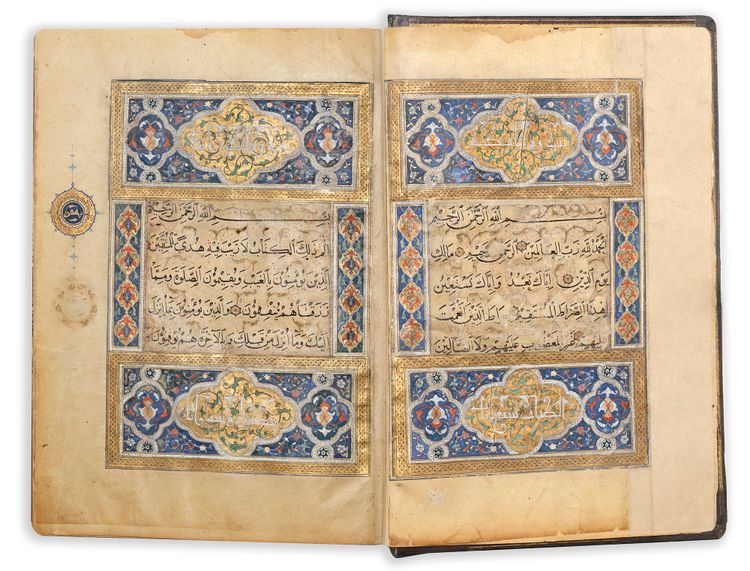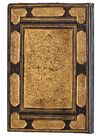AN ILLUMINATED QURAN, BAGHDAD, QARA QUYUNLU DYNASTY, DATED 870 AH/1465 AD
A complete Quran, Arabic manuscript on cream paper, each page with 11 lines written in black naskh script within gold and blue rules, gold roundel verse markers outlined in blue with dots. Surah headings in gold thuluth script outlined in black on a gilt and polycrome decorated ground, gold marginal medallions marking 'khams and aushr'. Opening bifolio with gold and polychrome illuminated shamsas on a gold and polychrome floral ground. The following two opening biofolia heavily with gilt and polychrome decoration framing 5 lines of black naskh script in clouds reserved against a gold ground.
In gilt stamped morocco with flap, gilt stamped and painted doublures.
22.5 by 16 cm.
CATALOGUE NOTE
As documented in the shamsas, this beautifully illuminated manuscript was commissioned by Abu'l Fath Pir Budaq. Pir Budaq (d.1466) was the eldest son of the Qara Quyunlu ruler Jahanshah (r.1439-1467). He led the important Turkoman assault on the Timurid territories of central Iran, conquering both Fars and Kirman. He was awarded the governorship of Shiraz, where he began to act with increasing independence and in defiance of his father. In spite of escalating tensions between the two, Pir Budaq was eventually offered governorship of Baghdad, the former seat of the Islamic world. There he asserted his autonomy by striking coins in his own name and replacing his father's name with his own in the Friday sermon. Jahanshah took this direct challenge badly, marched on Baghdad and after a siege of eighteen months, took the city and killed Pir Budaq. For more on Pir Budaq, please see B.W. Robinson, Studies in Persian Art, vol. I, The Pindar Press, London, 1993, pp.18, 22 and 228-229.






